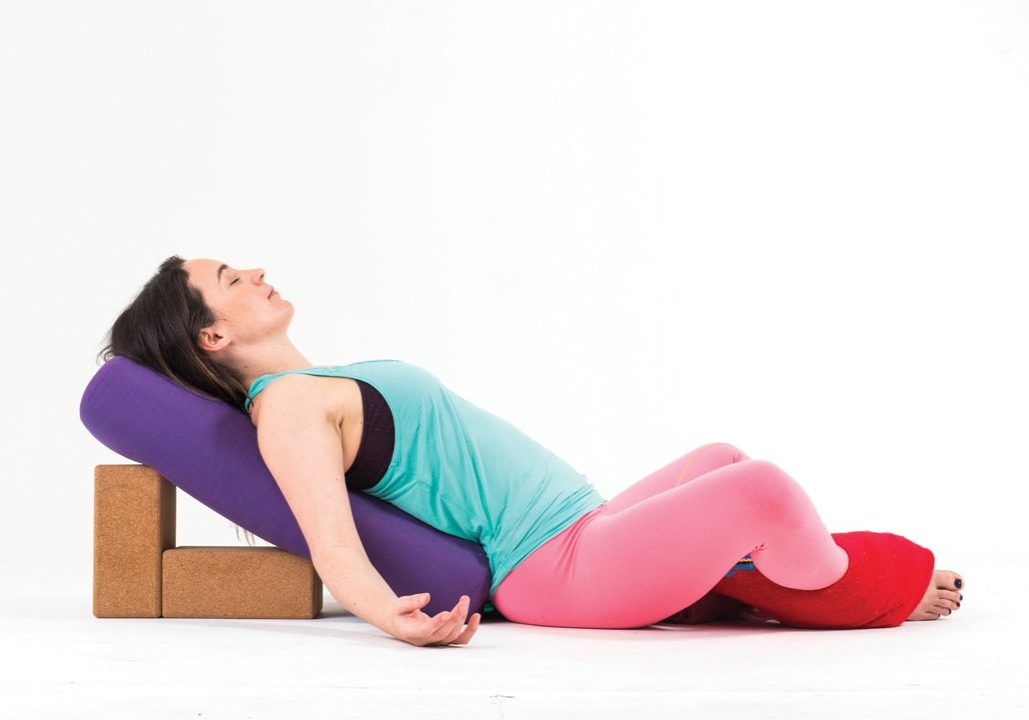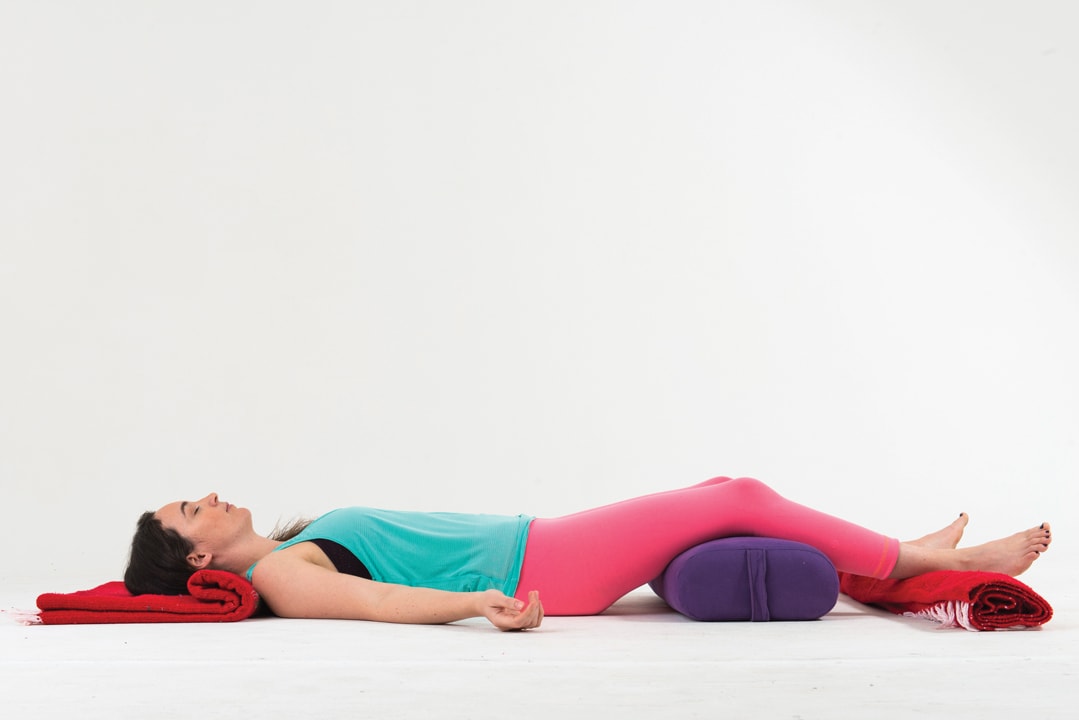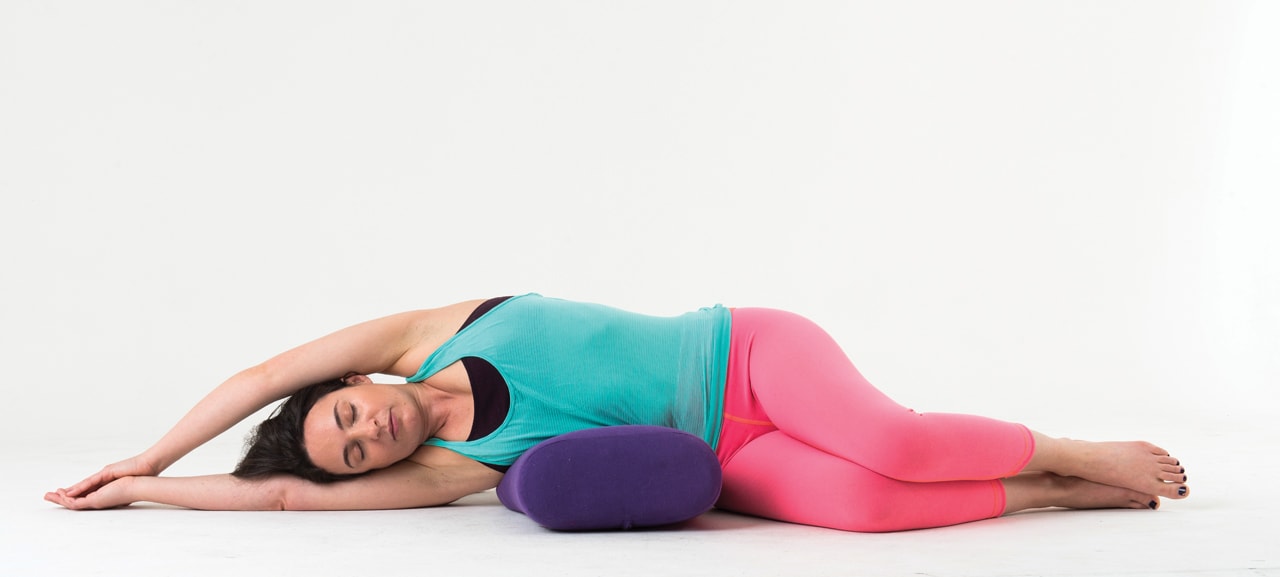
5 reasons you should try Restorative Yoga
Restorative Yoga can bring with it wide-ranging benefits, from reducing stress to weight loss. Best of all, it’s available to everyone. By Julia Clarke
At first glance, Restorative Yoga might seem a bit less likely to produce the profound transformation you’d expect from hours spent sweating through a vigorous yoga practice. This relaxing practice is characterised by sustained periods spent lying down doing very little — yet it offers some surprising health benefits that could really change your life. Best of all, Restorative Yoga is truly accessible to everybody.
What is Restorative Yoga?
Imagine this: After another stressful day at work you enter a quiet, softly-lit room. On your yoga mat are blankets and cushions. You lie down, supported, and feel your muscles and jaw finally relaxing. You exhale and feel a deep, inner stillness. You start to notice the pause between your breaths where you feel steady and free. The tidal wave of thoughts subsides. After an hour containing only a few poses, you emerge renewed. That night, you sleep deeply, and in the morning, you feel a little less crushed by the unending barrage of emails and demands.
Restorative Yoga invites you into a state of deep relaxation by using props in reclining postures to support your muscles in gentle positions. It is distinctly devoid of deep stretches or strengthening poses like downward facing dog and warrior two that are the keystones of other styles of yoga.
Instead, the mainstay of a Restorative Yoga practice is basic relaxation pose, essentially a supported Savasana (corpse pose) which is held for up to 25 minutes at a time. Other poses include gentle supported backbends, twists, forward folds and hip openers held for anywhere from three to 10 minutes, giving your body plenty of time to relax so that your mind can enter a quiet, meditative state.
How does Restorative Yoga work?
It turns out that Restorative Yoga is a powerful antidote to stress. Sustained, conscious relaxation gives you the chance to metabolise daily stress and allows your nervous system to shift from the ‘fight or flight’ mode of the stress response to the ‘rest and digest’ mode of the relaxation response. When your body relaxes, your breathing naturally slows and deepens, which has been shown to improve the functioning of your vagus nerve.
Meaning ‘wandering’ in Latin, the vagus nerve is a term given to a large network of nerves that transmit signals between the brain and the gut, heart, immune system and other organs. Because of its extensive nature, the functions of the vagus nerve are astonishingly wide-ranging and include unconscious mechanisms such as mood control, immune response, digestion, and heart rate.

So what are the benefits of Restorative Yoga?
1. Less stress
Relaxation has been shown to reduce the release of stress hormones like adrenaline and cortisol that in excess can contribute to inflammation and high blood pressure. Making a regular practice out of relaxation can help soothe these symptoms along with improving concentration, mood, and sleep quality, lowering fatigue and boosting problem-solving abilities, all of which serve to help you cope with future stress better.
2. Better breathing
Shallow breathing is common in our computer-driven society, and it can provoke anxiety, back pain, brain fog and poor digestion. Simply paying more attention to your breath can help, but it’s easier to breathe deeply when you’re lying down and relaxed. Enter Restorative Yoga, where we soften the respiration muscles through comfortable postures, then bring awareness to the breath, returning it to its natural state.
3. Rest and digest
Daily stress wreaks havoc on your body, even interfering with your enteric nervous system’s ability to digest food which can lead to pain and discomfort. Research has shown that relaxation therapies offer relief from pesky gastrointestinal discomfort like bloating, indigestion and gas.
4. Pain free
It’s been reported that chronic pain now affects between one third and one half of the UK’s population. In addition to injury, causes of pain include stress, poor posture, inadequate breathing and inflammation, all of which are significantly reduced with relaxation techniques like Restorative Yoga, causing relief from both chronic and acute pain.
5. Weight loss
This is perhaps the most surprising benefit of Restorative Yoga. We’ve been hard wired to think we should combat excess pounds with cardio, but high secretion of the stress hormone cortisol has been linked with an increase in abdominal fat, and this type of fat is actually better targeted with relaxation than strenuous exercise, which can inadvertently increase cortisol levels.
Who can do Restorative Yoga?
As you can see, Restorative Yoga has the power to drastically improve the quality of your life, and when you feel better, it improves the lives of those around you. What’s more, this isn’t a ‘VIP only’ area— you can harvest these benefits from the moment you start practicing, regardless of your experience level, age, mobility or experience. Give it a go today and reap these amazing rewards.
Julia Clarke is a yoga teacher and ayurvedic practitioner (juliaclarkeyoga.com). Her book, Restorative Yoga for Beginners, offers the guidance to begin your yoga practice and bring harmony to your quality of life, one gentle stretch at a time. Available on Amazon. Find her on Instagram @juliaclarkeyoga





